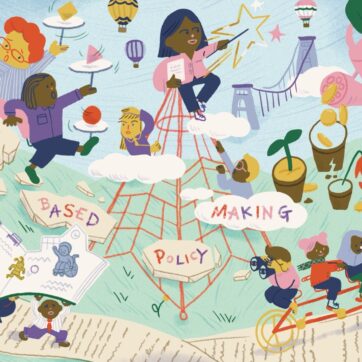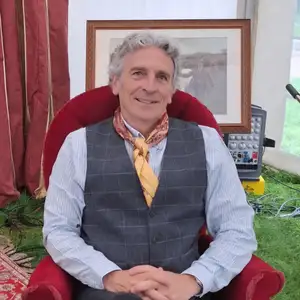The concept of impact has gained significant traction in academia since its introduction in the Research Excellence Framework nearly 10 years ago, which places emphasis on research that brings about positive societal change. However, as we confront increasingly complex, interconnected and wicked societal challenges, there is a need to move beyond the retrospective lens on impact and embrace new modes of how we understand and achieve change. Circular economy research is an evolving field that brings together experts from various disciplines who work together to address the grand challenges, with an ambition that by closing the flow of resources in the system, we are able to regenerate our environments and build thriving economies.
In this article, I explore the transformative potential of circular impact as a collaborative practice within project teams. This approach entails individuals and groups of people carrying out activities that simply, naturally, and normatively delve into the fundamental implications of research and subsequent change. The concept’s effectiveness hinges on collaborative efforts, across triple helix collaborations, as well as the establishment of cross-sectoral and interdisciplinary networks.
By embracing circular impact, we have the opportunity to not only build narratives around our work for evaluation and monitoring purposes, but, using evaluation as a learning and improvement mechanism, to design impactful projects that set out to rejuvenate and restore our social, economic, and environmental systems – embracing all the rich and multifaceted forms such projects may take!
From critique to action
Much has been said about the ‘impact agenda’ in the context of UK Higher Education, both positive and negative. A lot of the criticism highlights valid shortcomings in the way impact has been evaluated in exercises such as the REF, with authors citing the transactional nature of the process, difficulty for certain fields and disciplines to reconcile the kinds of (quantifiable) evidence required, and the lack of accounting for outcomes that may emerge over longer periods of time. For an overview of these debates, this book is a good place to start.
However, critique is not the focus here. Instead, I want to think positively about impact through the lens of practice. It is something our team often thinks about, for two reasons.
First and foremost, in the UKRI NICER Programme we work on scaling capacity and capability for the circular economy (CE) in the UK. Alongside eliminating waste and circulating products and materials at their highest value, regenerative practice is a core principle in the CE community. Just as we strive to regenerate natural resources and create positive feedback loops in our CE efforts, we also aim to generate sustainable and long-lasting policy and industry impacts that benefit society and promote positive change over time.
To do so, our team have embedded an impact, monitoring and evaluation process co-designed with my colleagues Zaneta Muranko (University of Exeter) and Madeline Smith (Glasgow School of Art) that allows us to take stock of and co-produce our ‘theory of change’ in real time. This moves us beyond static mapping activities common at the beginning of a project and sees us continually and critically reflecting on our monthly actions in line with broader goals and ambitions (the ‘how’ is addressed below). Eschewing linear causality, this allows us to continually review our activities and make fine-tuned adjustments to ensure our outputs and activities are reaching the best people and generating impactful outcomes. Evaluation needs to be developmental and evolving to match this reflective process.
A third consideration would be the emphasis placed on impact by funding bodies such as United Kingdom Research and Innovation, who break down impact into categories and provide toolkits for building impact into research projects.
Impacting policy
Circular economy has gained a lot of traction in policy circles, recognised as a viable solution to pressing issues and grand challenges in UK government strategy such as the recent Critical Minerals and MedTech strategies, the Skidmore Review of Net Zero, plans for growth outlined in Build Back Better, the Resources and Waste Strategy for England among many more initiatives in the devolved administrations.
But while it is a hot topic, policy impact does not generate itself!
As practitioners of circular impact, we recognise the need to address complex challenges that cannot be fully captured by publication metrics alone. It calls for a shift in mindset and practices, emphasising the importance of transformative change, whole systems approaches, and sustainable research processes by engaging with diverse knowledge holders.
In short, the goal of circular impact is to shift mindsets from impact as an effect of research to impact as a purposeful act planned for upstream.
How do we do this?
Born out of the civil service, ‘theories of change’ are now commonplace in many organisations. They function as useful roadmaps that describe how programmes or policies are expected to work. However, produced and left alone, they remain just that, a theory about how certain actions lead to certain impacts. This kind of linear causal thinking often does not reflect the complexity of real world situations.
To ensure we do achieve the impact we desire, we can’t simply wait and see. Rather, we have to build in processes for reflective learning and adaptation to allow adjustment and improvement in real time. In other words, we must practice circular impact.
While it may seem a daunting prospect, as a team we follow some simple steps on a monthly basis that may serve as a useful starting point for others:
1. We developed a tool: This could be relatively simple or comprehensive based on need, but the important thing is to have a dedicated place to consistently record information that is accessible to all. Here, we have categories to capture data on activities, how they were initiated, who was reached, mechanisms for extending reach, forecasting potential medium and long term outcomes and so on.
2. We meet regularly: Each month, dedicated members of the team meet individually with the others to discuss the month’s core activities. During this time, we consider how activities – such as presenting at a conference, attending a workshop, publishing a paper, etc. – align with our broader goals and explore potential for extending otherwise short-term events into longer lasting opportunities.
3. We strategise, then act: During monthly discussions, we may have identified further mechanisms to generate reach such as translating a technical academic article into a general audience blog post or opinion piece. Regularly strategising in small groups is fantastic for idea generation and uncovering otherwise unknown links. Plus, finding ways to engage different audiences beyond academia is key to building meaningful impact.
4. We adapt and evolve: Because this is part of our regular practice (don’t be fooled, it took some work to embed), we are able to evaluate what we are doing systematically over time. When things work, we are able to do more of them. When they don’t, we do less or we alter the course. In other words, circular impact for us means putting our theory of change into practice.
Meaningful impact
Research evaluation frameworks serve their purpose in assessing research excellence within a specific context, but circular impact practices urge us to look beyond those boundaries and consider the broader implications and transformative potential of research in addressing today’s grand challenges – confronting their complexity through adaptation and evolution.
By doing so, we are able to foster research that is not only rigorous in an academic sense, but which also actively contributes to a regenerative and sustainable future for our society and the planet by positively engaging with policymakers and broader society.
Let’s embrace the notion that evaluation should be a learning process and that impact can be a positive force, shaping a better world through our collective efforts!


